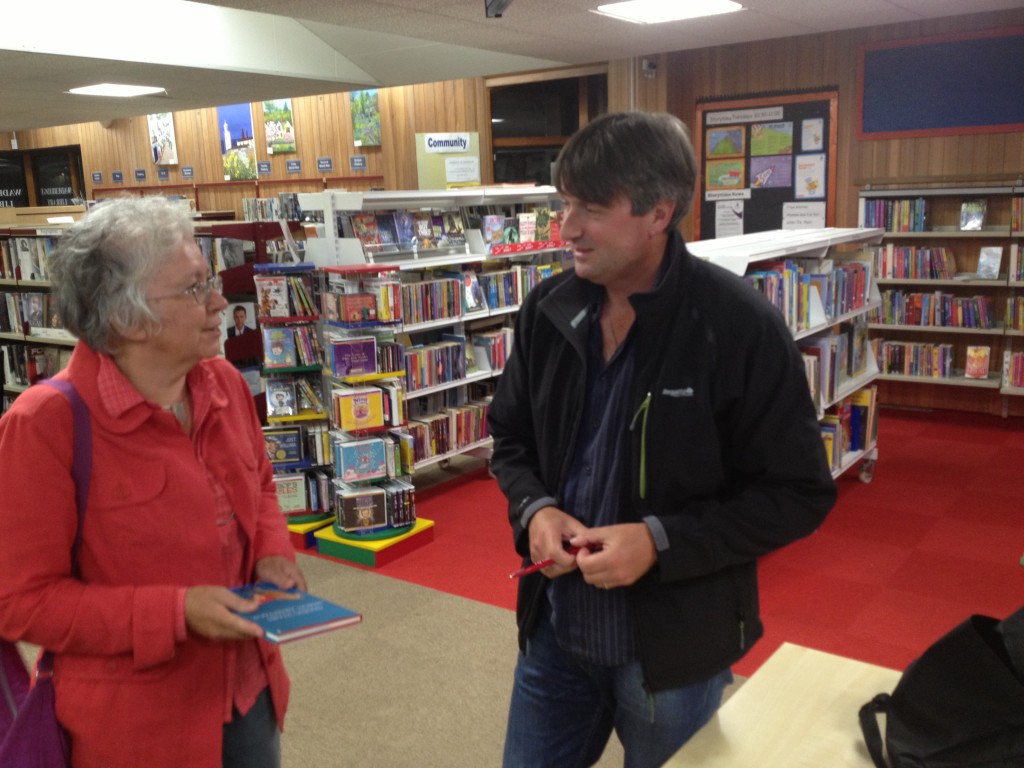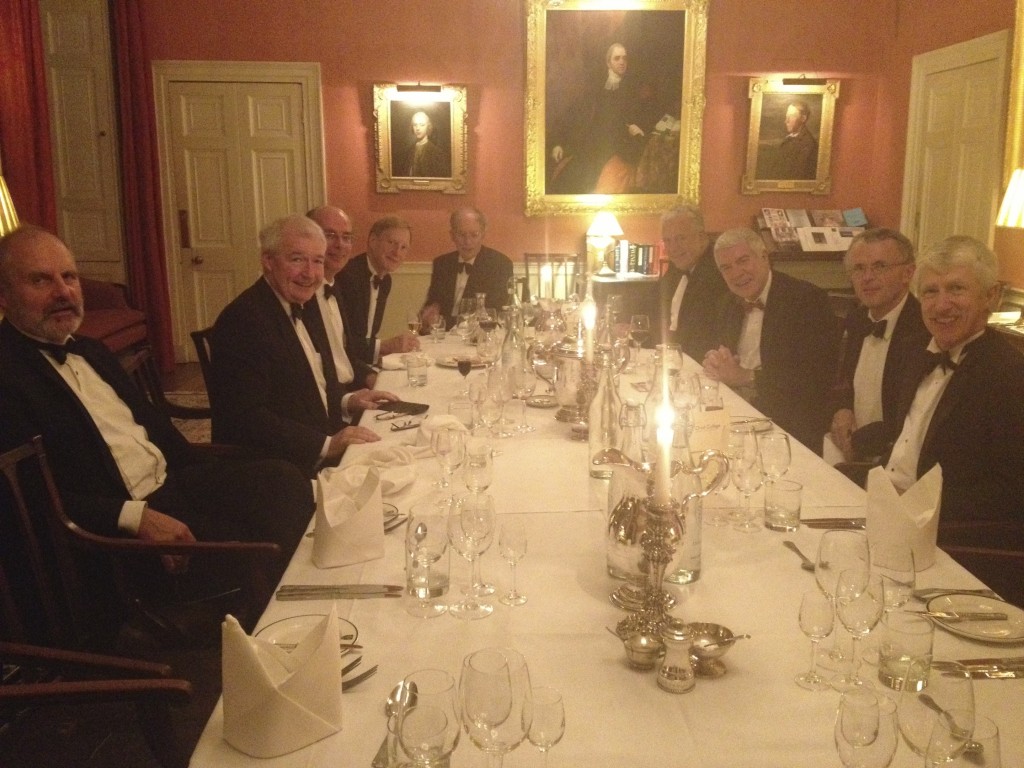On Friday, around 4:30 pm, I walked down to the town hall, where the Wadebridge Renewable Energy Network (WREN) had an exhibition called “Wadebridge Energy Futures”. Friday was also the day of the WREN annual general meeting, so I figured that I could walk down just once, see the exhibition, and then hang around and maybe help out for the forty-five minutes before the AGM, rather than walk up and back again.
The exhibition traced the sources of energy and power used in Wadebridge from the start of the industrial revolution (water wheels) through coal-fired steam engines (1834) and its own coal gas works (1850) to its own diesel-fired electricity generation plant (1926), ending with the national grids for distributing electricity and gas and the closure of the railway.
And then it went on, because the exhibition was about energy futures and the aim of making Wadebridge self-sufficient in energy – not for the first time, but once again – and cutting reliance on the national grids and the Russian and Qatari gas and nuclear fission and coal and, who knows, our own fracking gas. (Who else out there watched Battlestar Galactica and can’t hear serious newsreaders talk of ‘fracking’ without a faint smile?)
And this time, Wadebridge won’t use coal and oil as the source of power, but rather wind and solar and geothermal… The clue is in the name: Wadebridge Renewable Energy Network. There’s no sense in being too subtle about this.
My offer of help was well received as we transformed the exhibition from being a horseshoe shape in the middle of the hall to two lines down the sides, with 140 chairs in the middle for the AGM and the open meeting to follow it. It helped that David whom I knew from the bowling club was there, a WREN director no less.
WREN is actually a limited company, so the AGM followed a prescribed and familiar form, with rather more free-form questions and discussion than limited companies normally allow. The Shell AGM, for example, tries hard to stick to the formalities, fending off the various protestors brandishing their one share, trying to promote their own agendas. It was interesting to see that the directors sat in the body of the hall, facing the members, rather than on the stage (which was set out with chairs for the later meeting). The chairman, Stephen, emphasised that the directors were there to do what the members wanted, a touch of humility that the banking sector, for example, would do well to emulate. But then, WREN exists to promote renewable energy, not to make a profit for its members and certainly not to enrich its (volunteer) directors.
At the end of the AGM, the WREN members were invited to help themselves to the refreshments. Having got there early, I’d already had a pint of Doom Bar (£2) and a couple of sandwiches, so I restricted myself to another sandwich and a cake. Other people came into the hall for the open meeting and slowly the guest speakers were assembled and ushered onto the stage.
First, after an introduction from Stephen, we had Peter Tutthill, president of the Wadebridge and District Museum (about to open in new premises) who enthused about the history of Wadebridge. He said he could go on for hours, but only had ten minutes. If I see he’s speaking again, it will be worth going to hear some of those hours. Steve Knightley is the newly elected LibDem county councillor for Wadebridge East and spoke about the unique attributes that Cornwall possesses, being close to the sea for wave and tide power, and wind power too, for that matter, and receiving more than the average amount of sunlight (2012 excluded). Sarah Prosser, chair of the Wadebridge Chamber of Commerce spoke of the fragility of relying on tourism for income and employment. A number of local businesses had been on the brink, saved by the sunshine we had this year. Wadebridge needs to brand itself as the low carbon town.
The next speaker was a primary schoolgirl, Maisy New, who thanked us for preserving the environment, keeping water fresh and clean, not letting the global temperature run away, and so on – the sting being that she was speaking as if from fifty years hence when we had actually done all these things. Let’s hope we can measure up to her expectations.
Professor Anne Carlisle, vice-chancellor of Falmouth University, was next, extolling Cornwall’s virtues (see Steve Knightley above). Cornwall has the potential to be the test bed for renewables. Julian German, the Cornwall Council portfolio holder for Economy and Culture, said that Cornwall Council is making loans to local energy groups. Renewable energy can be cheaper, and be a source of employment and revenue. Finally, Tim Smit, the founder of the Eden Project, spoke about achieving change. You get it, he said, by hanging on to the thing you want so that “they” know you are not going away. WREN must not allow itself to be seen, or be characterised, as hippie, as “other”. It must be “normal”, be “us”, not “them”, must include everyone in Wadebridge. Otherwise, it will be marginalised.
Discussion opened up to the floor, with people making points and asking questions. One person in particular was concerned with the landscape (which he quoted Julian German as saying was Cornwall’s greatest asset), and the detrimental impact renewable energy could have – windmills blighting the skyline, solar panel arrays covering the green fields – which would put off tourists and devalue the asset. This provoked a sometimes heated response, along the lines of not wanting Cornwall’s economy to be reliant on skittish tourists coming from the smoke to gawp at the scenery, that the landscape was by no means “natural”, having been crafted by farming over centuries, and that there would be no landscape if global warming were allowed to run unchecked. My instinctive reaction, too, was: “Nimby”; I like windmills.
But, you cannot be merely dismissive. We need people like this to apply the brakes every so often. I used to get very frustrated, when at work, with people who objected to projects, which were of obvious value and merit, and who slowed things down when speed seemed of the essence. Almost invariably, it turned out, the time taken to address the concerns of such people, to rethink aspects of the project, paid off in better projects with better outcomes. I’m sure it’s true for renewables projects as well. The lovers of landscape can’t have a veto, but nor can they be disregarded.
I’ll leave the last word, the long view, with the local historian, Peter. In their day, the mines disfigured the landscape, the china clay pits even more so, but Cornwall has absorbed them all, and they are part now of what people come to see. The same will happen with renewables.


